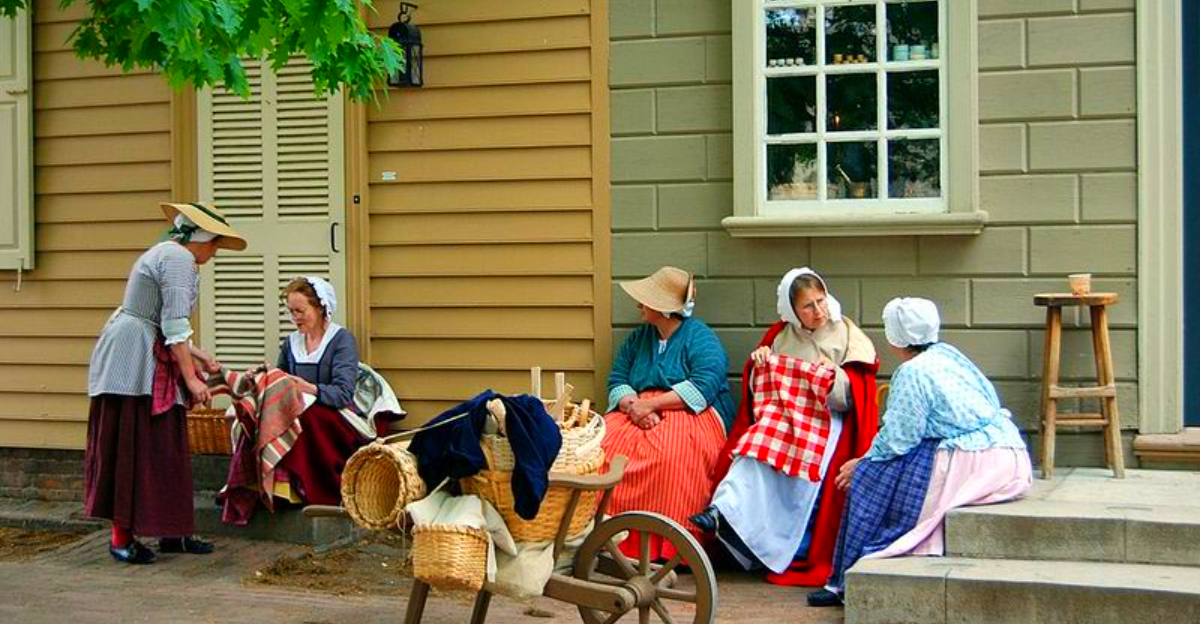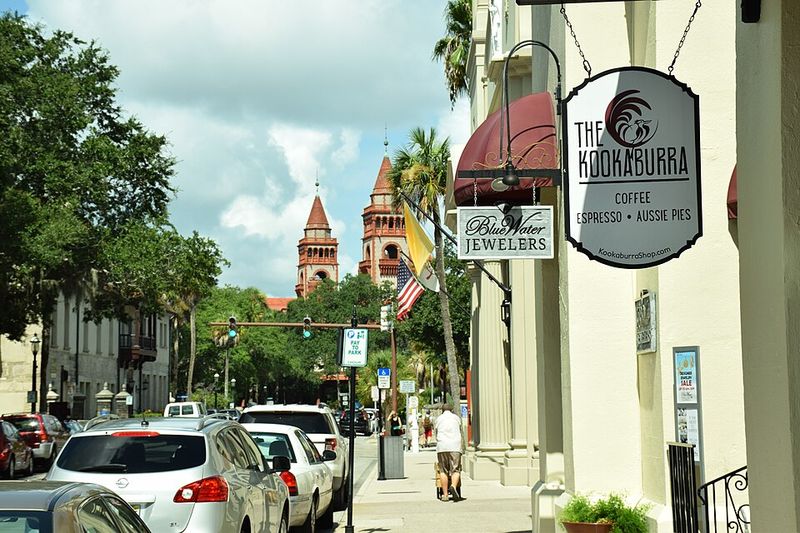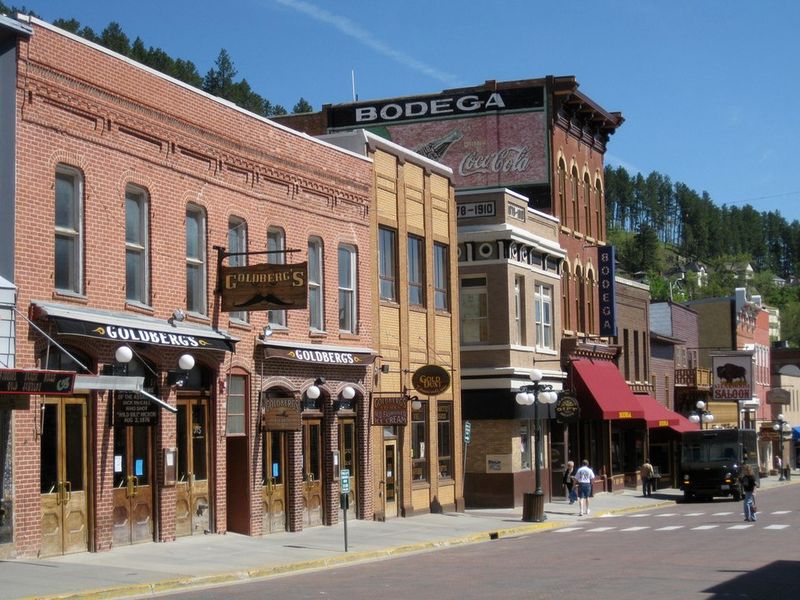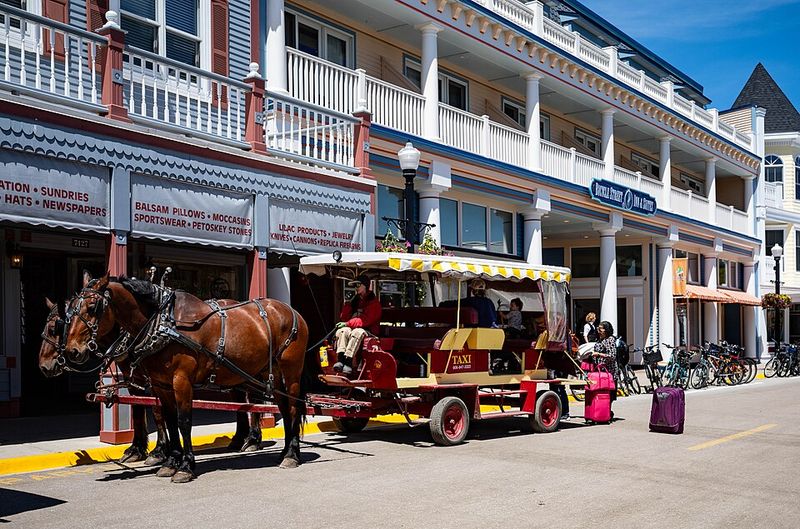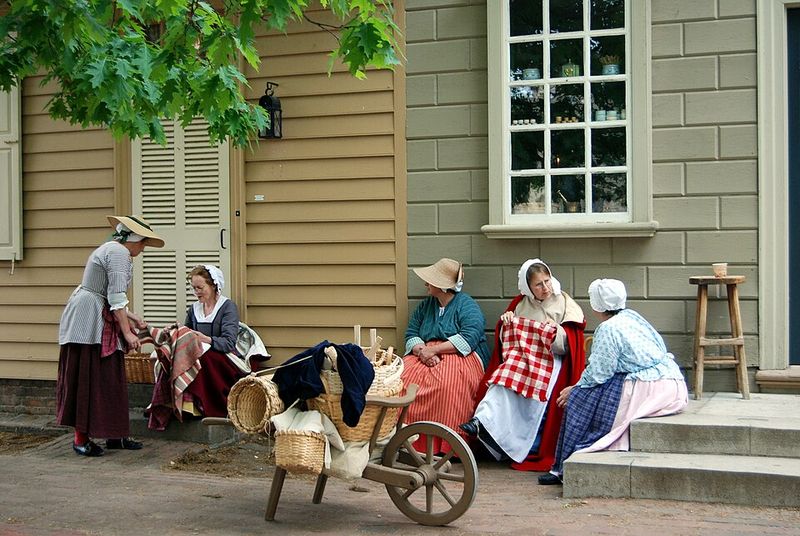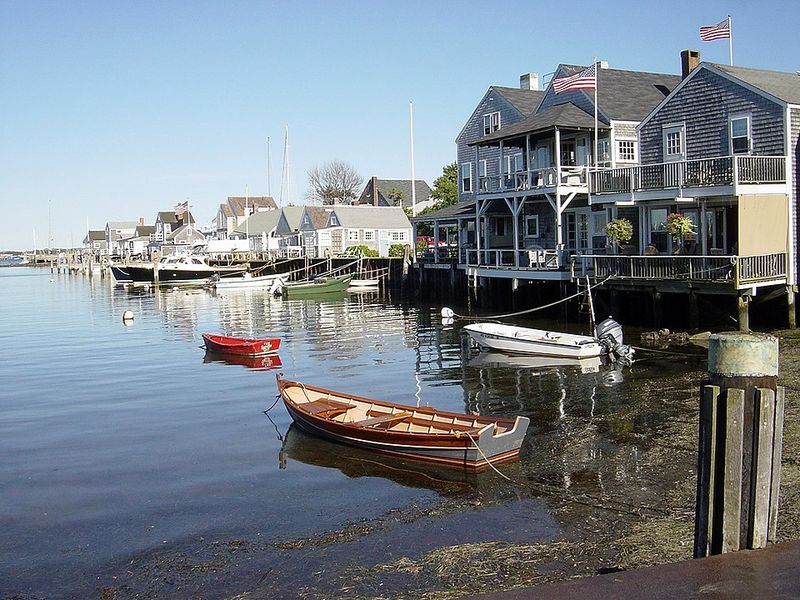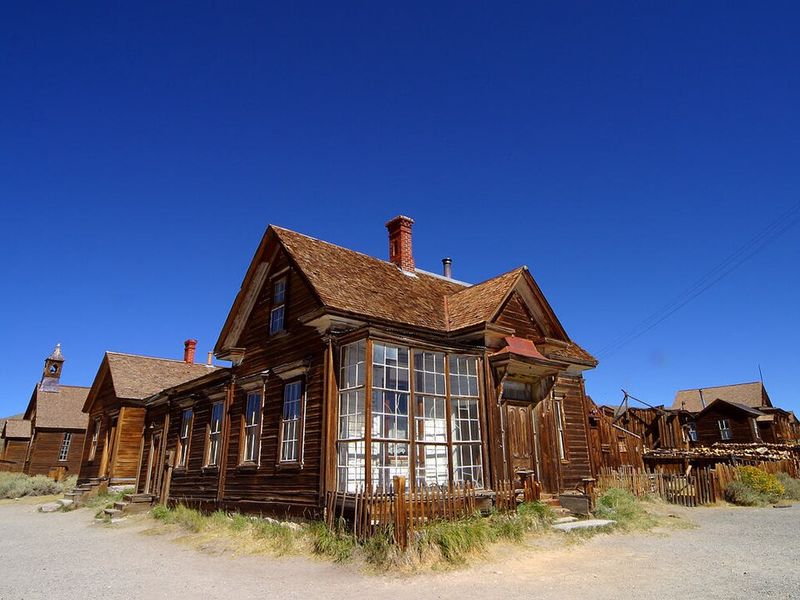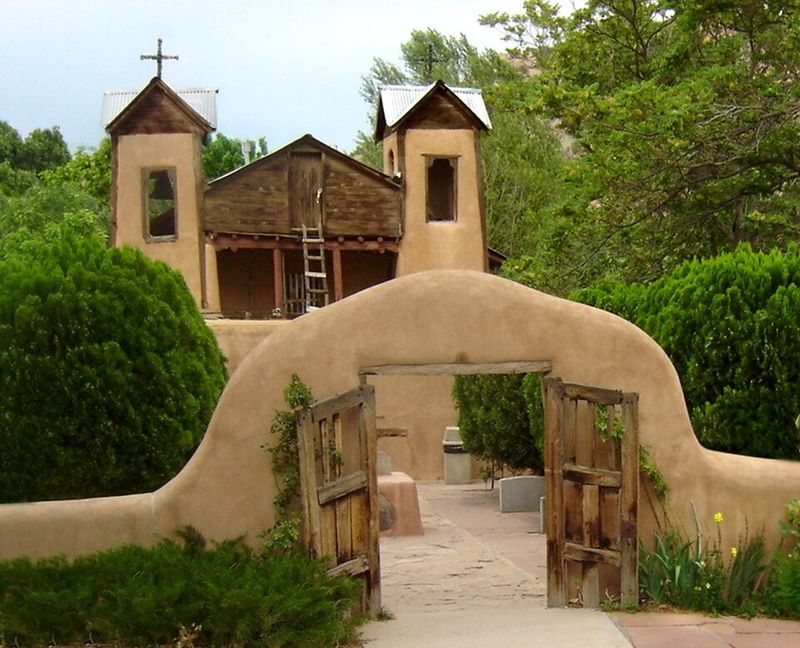Craving a journey that doesn’t require a passport or a time machine? These American towns preserve layers of history so vividly that every cobblestone, clapboard, and candlelit tavern feels alive. From colonial capitals to car-free islands, you’ll find immersive moments that transport you centuries back. Ready to trade traffic lights for lanterns and modern bustle for timeless charm? Start here.
1. St. Augustine, Florida
Founded in 1565, St. Augustine is America’s oldest continuously inhabited European-established settlement. Its narrow lanes, coquina walls, and Spanish colonial facades tug visitors into an earlier century. Wander past wrought-iron balconies toward the star-shaped Castillo de San Marcos, where cannon demonstrations echo across Matanzas Bay. Tapas bars and live music animate the evenings without breaking the spell. Museum houses, mission-era chapels, and ghost tours deepen the sense of layered time. Even simple details – tabby sidewalks, weathered doors, flickering lanterns – conspire to slow your pace. In St. Augustine, you don’t just see history; you feel it underfoot with every step.
2. Deadwood, South Dakota
Deadwood wears its Wild West legend openly: saloons, gaming halls, and storied shootouts echo down Main Street. Restored 19th-century buildings set the scene, while actors reenact infamous moments tied to Wild Bill Hickok and Calamity Jane. Museums illuminate gold rush fortunes and lawless frontiers. Boot Hill Cemetery overlooks it all, a sobering reminder of chance and consequence. The town’s National Historic Landmark status protects facades and folklore alike. Between neon and boardwalk creaks, you sense the boomtown pulse. Try a historic casino, then trade chips for heritage at the Adams Museum. Deadwood’s past still deals the hand.
3. Mackinac Island, Michigan
On Mackinac Island, time slows to the rhythm of hooves and bicycle bells. With cars banned, horse-drawn carriages roll past gingerbread-trim Victorian homes and the stately Grand Hotel. The scent of lilacs and fudge drifts down leafy lanes, while Fort Mackinac’s ramparts watch over the straits. Trails lead to limestone formations and lakeside vistas. Evening brings porch swings, lawn games, and twilight silhouettes of sails. The island’s Victorian charm isn’t curated; it’s daily life. Even errands feel like an Edwardian vignette. Come for the quiet, stay for the cadence, and leave measuring distance in clip-clops.
4. New Orleans French Quarter, Louisiana
In the French Quarter, centuries converse in wrought iron and song. Creole townhouses with filigreed balconies cast lacey shadows across weathered shutters and cobblestones. Gas lanterns flicker as brass bands weave past cathedral spires and courtyards perfumed by jasmine. Café tables spill onto sidewalks where beignets dust mornings in sugar. Peek into intimate patios, hear stories in every keystone, and feel river breezes braid with history. The Quarter’s 300-year European imprint endures without museum glass. Architecture, music, and cuisine anchor a living culture that resists the clock. Night falls, and the past keeps playing.
5. Savannah, Georgia
Savannah seduces with shady squares stitched together by brick paths and moss-laden oaks. Federal, Georgian, and Victorian facades frame gardens that feel like outdoor parlors. Carriage wheels clatter, fountains murmur, and wrought-iron details cast filigree over stucco and brick. The city’s plan—twenty-two preserved squares – invites lingering, not rushing. Tales of pirates, patriots, and ghosts grease the hinges of old doorways. Inside historic homes, sunlight pools on heart-pine floors and plaster rosettes. Even the riverfront wears its cobbles proudly. In Savannah, history isn’t posed; it lounges with Southern ease, whispering secrets through every shaded canopy.
6. Galena, Illinois
Galena’s redbrick Main Street unfurls like a preserved 19th-century postcard. Prosperity from lead mining built handsome storefronts, cast-iron details, and stately homes – including Ulysses S. Grant’s residence. Today, boutiques, bakeries, and antique shops fill original buildings along the river bend. Church steeples puncture the skyline, while hillside streets reveal porches with river views. Festivals and carriage rides add gentle bustle without disturbing the spell. Trails and vineyards surround town, but the heart beats in those bricks. Step inside a saloon for local history, then stroll at twilight when windows glow. Galena feels warmly, stubbornly timeless.
7. Colonial Williamsburg, Virginia
Colonial Williamsburg is a living stage where the 18th century unfolds as daily life. Costumed interpreters debate independence, hammer iron at the forge, and fire muskets on the green. Stroll Duke of Gloucester Street, duck into taverns for period fare, and tour elegant homes enlivened by candlelight. Political tensions feel tangible within the Capitol and Governor’s Palace. Hands-on trades reveal the labor behind liberty – printing, coopering, millinery – each craft preserving memory in motion. Reenactments aren’t spectacle but context, stitching ideas to place. By nightfall, hoofbeats and lamplight seem natural. You’ll leave measuring time by bell and drum.
8. Harper’s Ferry, West Virginia
Harper’s Ferry occupies a dramatic perch where rivers meet and eras collide. Brick storefronts and stone workshops line steep streets that witnessed John Brown’s raid and Civil War upheaval. Park rangers animate industrial heritage, canals, and armory stories. Trails climb to overlooks where trains and church spires frame a 19th-century tableau. The town’s compact scale concentrates history; each block layers politics, faith, and industry. Duck into museums, then follow towpaths echoing mule steps. Evening fog gathers between hills, softening edges until time feels porous. Harper’s Ferry is less a visit than a vantage point on America’s turning points.
9. Jerome, Arizona
Jerome clings to Cleopatra Hill like a stubborn memory of the copper boom. Once a raucous mining town, it nearly vanished before artists and preservationists revived its creaky boardwalks and brick facades. Galleries and saloons occupy buildings that literally creep downhill on old mine tunnels. Museums display ore carts, machinery, and hard-rock stories. Views spill across the Verde Valley, vast and sunbaked. At dusk, wind rattles through stair-stepped streets, and neon hums over history. Jerome’s patina is honest: rust, dust, and resilience. It’s a ghost town that learned to live again without shedding its past.
10. Nantucket, Massachusetts
Nantucket preserves a whaling-era aesthetic with near-obsessive grace. Gray-shingled cottages line cobblestones, their hydrangeas nodding toward sea breezes and distant foghorns. Strict design codes maintain uniform charm, from sash windows to crushed-shell paths. The Whaling Museum anchors narratives of peril and profit, while lighthouses keep quiet vigil. Biking lanes thread dunes to secluded beaches where time loosens. Even shop signs feel period-correct, hand-lettered and restrained. At twilight, lantern-lit porches invite hushed conversation. Nantucket’s allure is restraint: a coastal town that refuses excess, letting weathered cedar, salt air, and memory do the storytelling.
11. Bodie State Historic Park, California
Bodie is a gold rush town held in “arrested decay,” preserved exactly as abandonment left it. Sun-bleached clapboard storefronts, schoolrooms with chalk dust, and rusting stamp mills stand against the high desert. Peering through windows is like eavesdropping on time – place settings, ledgers, and toys frozen mid-life. Rangers safeguard the fragile equilibrium: nothing restored, nothing staged. Wind scours streets once crowded with fortunes and gunfire. The silence feels truthful, the horizon uncompromising. Photographers chase texture; historians chase context. Visitors leave with dust on boots and a new respect for impermanence made visible.
12. Virginia City, Nevada
Virginia City rose from Comstock Lode silver into a flamboyant 19th-century metropolis. Today, wooden boardwalks, saloons, and ornate opera houses revive its swagger. You can ride a steam train, tour mine tunnels, and browse museums detailing fortunes won and squandered. False-front facades lean into a panoramic desert backdrop, their typography a gallery of Americana. Costumed guides animate scandals, journalism, and technology that once made this town epic. Despite taffy shops and souvenirs, the grain remains authentic: creak, grit, and brass. Virginia City doesn’t re-create the West; it simply refuses to apologize for it.
13. Chimayó and High Road, New Mexico
The village of Chimayó anchors a tapestry of Spanish Colonial heritage along the High Road to Taos. At El Santuario de Chimayó, adobe walls cradle pilgrimage traditions centuries deep. Nearby, weaving studios and tinsmith shops keep ancestral crafts alive. Adobe architecture, horno ovens, and chile ristras lend earthy texture to daily life. Drive between hamlets where chapels sit beneath cottonwoods and mountain light feels sacred. Festivals blend devotion and community, while kitchens simmer with red chile. Here, time is cyclical, measured by feast days, harvests, and handwork. The past is practiced, not preserved.
14. Port Townsend, Washington
Port Townsend pairs a deep-water harbor with one of the West’s best Victorian streetscapes. Boom-era optimism built elaborate brick and Queen Anne buildings that survive intact, now home to bookstores, cafes, and galleries. Wooden boat culture thrives at the marina, where masts clink and varnish gleams. Fort Worden’s batteries and parade grounds offer military history and salt-scrubbed vistas. Fog drifts in, softening gingerbread trim and lighthouse beams. Festivals celebrate maritime craftsmanship and vintage tunes. With sea air in your lungs and whistle buoys calling, you’ll swear steamships could round the point any minute.
